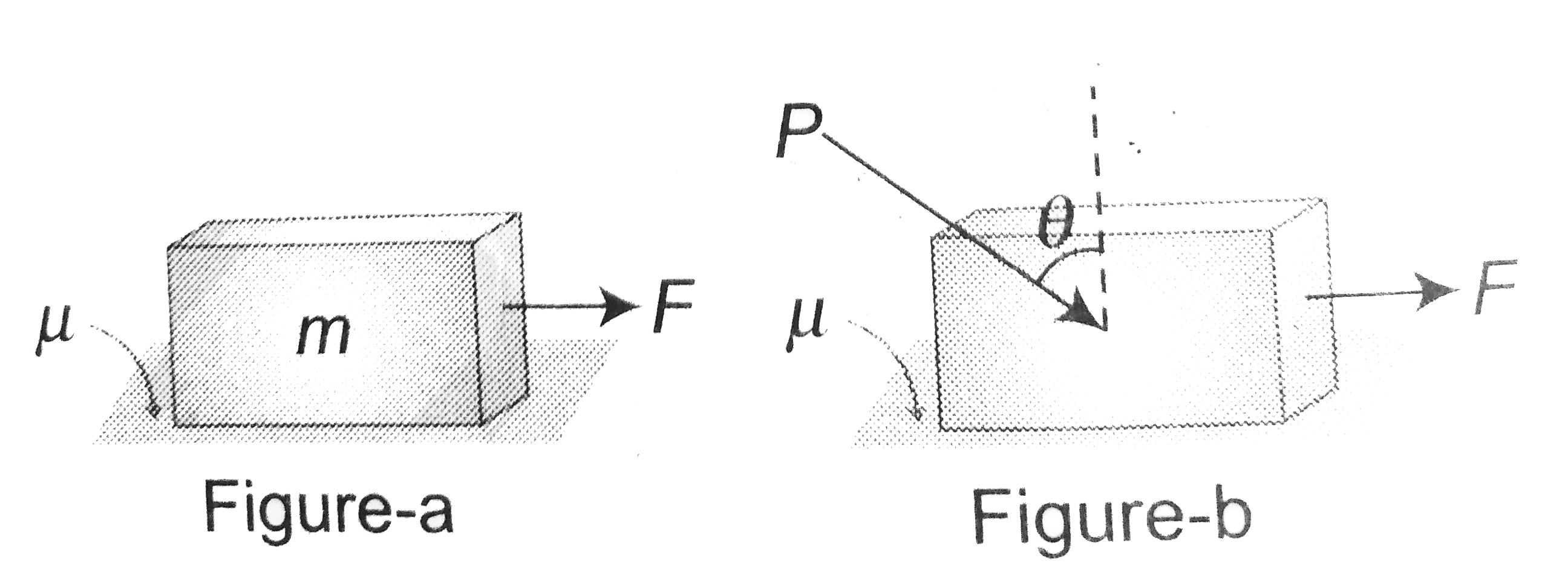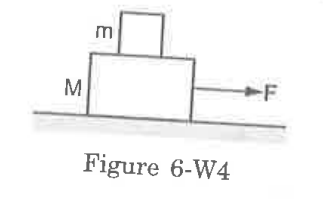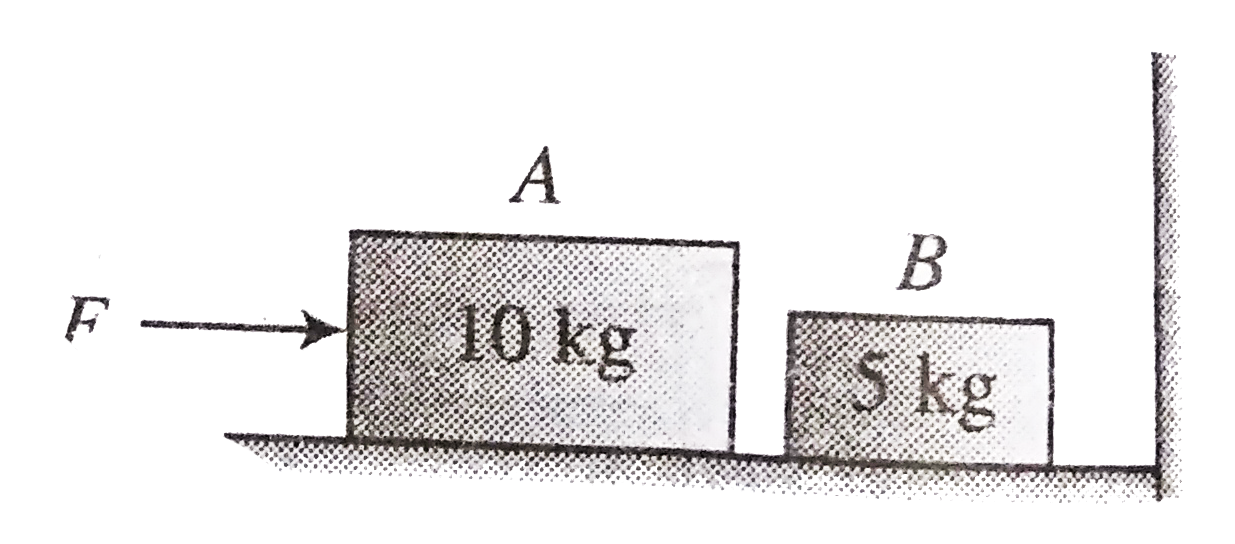The coefficient of friction between the block and the horizontal surface is μ. The block moves toward right under action of horizontal force F (figure-a). Sometime later another force P is applied to the block making an angle theta (such that tanθ=μ) with vertical as shown in (figure-b). After application of force P , the acceleration of block shall.

increase
decrease
remain same
information insufficient to draw inference
The correct Answer is:C

The free body diagram of block in fig. b is as shown.
N=mg+Pcosθ
and acceleration of block
a=F+Psinθ−μ(mg+Pcosθ)m
a=F+Psinθ−sinθcosθ(mg+Pcosθ)m=F−μmgm
Hence P does not change acceleration.
Similar Questions
The coefficient of static friction between the two blocks shown in figure is μ and the table is smooth. What maximum horizontal forced F can be applied to he block of mass M so that the block move together?

View SolutionA block slides down an inclined plane that makes an angle θ with the horizontal. If the coefficient of kinetic friction is μ, find the acceleration of the block.
View Solution
Knowledge Check
The coefficient of static friction between the two blocks shown in figure is μ and the table is smooth. What maximum horizontal forced F can be applied to he block of mass M so that the block move together?
 A0.15mgB0.05mgC0.1mgD0.45mg
A0.15mgB0.05mgC0.1mgD0.45mg
A horizontal force F is applied to a block of mass m on a smooth fixed inclined plane of inclination θ to the horizontal as shown in the figure. Resultant force on the block up the plane is:

View SolutionA block of mass M is kept on as rough horizontal surface. The coefficient of static friction between the block and the surface is μ. The block is to be pulled by applying a force to it. What minimum force is needed to slide the block? In which direction should this force act?
View SolutionThe coefficient of static friction between a block of mass m and an incline is μs=0.3, a. What can be the maximum angle θ of the incline with the horizontal so that the block does not slip on the plane? b. If the incline makes an angle θ2 with the horizontal, find the frictional force on the block.
View SolutionA block is kept on a rough horizontal surface as shown. Its mass is 2 kg and coefficient of friction between block and surface (μ)=0.5. A horizontal force F is acting on the block. When

View SolutionA block of mass M is kept on as rough horizontal surface. The coefficient of static frictionbetween the block and the surface is μ. The block is to be pulled by applying a force to it. What minimum force is needed to slide the block? In which direction should this force act?
View SolutionTwo bodies A and B of masses 10kgand5kg placed very slightly seperated as shown in figure The coefficient of friction between the floor and the block are as μs=0.4 block A is pushed by an external force F The value of F can be changed when the weight between block A and ground breaks block A will start pressing block B will start pressing the vertical wall

The force of friction acting on B verius with the applied force F acceleration to curve
View SolutionA block placed on a horizontal surface is being pushed by a force F making an angle θ with the vertical. If the friction coefficient is μ. How much force is needed to get the block just started. Discuss the situation when tanθ<μ.
View Solution